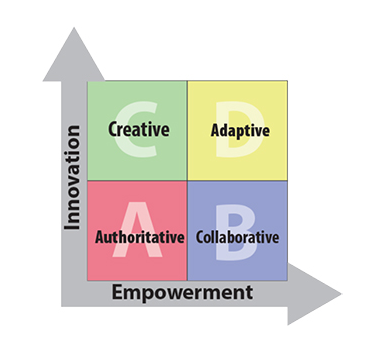
External forces such as the COVID pandemic, changing societal values, regulations, and public opinion continue increasing pressure around schools. In addition, for the last several years, schools have struggled with internal forces, including new technology, challenging student behaviors, and higher expectations for student achievement. These external and internal forces continue to build, and schools are facing severe budget cuts after the federal pandemic aid disappears. These pressures will have a significant impact on many schools. However, some schools can deftly adjust to these increasing forces. I call these resilient schools.
Resilience is being able to recover from or adjust easily to change. I have learned from many of the schools that I have visited that adapting to change is about something other than adopting best practices or even following research-proven programs. Instead, resilience creates conditions for a school to use staff talents to meet student needs uniquely. School leaders must abandon any hope of maintaining the status quo and be able to lead their organizations to adapt to these changing conditions as resilient schools.
School reform tends to closely examine successful schools and replicate their practices, such as Professional Learning Communities (PLCs), block scheduling, or mimic visioning and strategy planning. However, simply trying to replicate these practices may not be the answer! Instead, the answer is creating the underlying strength of resiliency. Resiliency is not resistance or resignation. Neither is it protecting the comfortable status quo. Resiliency is the quality of adaptation to changing conditions and perseverance to achieve goals.
There are three strategies school leaders should pursue in creating resilient schools: developing an integrated and aligned system, 2) understanding schools as living systems and 3) improving organizations through adaptive leadership.
Developing an Integrated and Aligned System
When we think about services in our society, we focus simply on the vital occupation in that service. For example, we focus on doctors in medical care, pilots in airline transportation, or soldiers in the military. The reality is that doctors, pilots, or soldiers could not function and do the complex tasks involved in their job without a support system around them. Doctors rely on a system of technicians, assistants, researchers, data analysts, and administrative support to do their jobs well. Pilots rely on air traffic controllers and maintenance staff to ensure that thousands of flights take off and land safely. The recent airline delays were not a result of poor pilots but the result of faulty computer systems.
In the case of education, we focus on the teacher as the visible role in schools. But as challenging as teaching and learning is today, teachers require a complex integrated system of professionals and data systems to support them. In some cases, teachers have yet to receive adequate data systems or support in technology, counseling, or nutrition to support their work. School leaders need to consider the entire system to enhance teaching and learning and not simply focus on the quality of individual teachers. Additionally, that system needs to be aligned around supporting the critical delivery of learning experiences. Often because of contracts, regulations, and just plain tradition, schools neglect to build the capacity to support current teachers and teaching. Many schools carry on functions that have little connection to instructional goals. It makes little sense to have many people working within an industry if they are not focused and aligned toward providing the important service. For example, remote learning during the pandemic causes us to rethink the traditions of attendance and the traditional school day/week/year. School leaders must consider building an integrated system that works efficiently and focuses on delivering high-quality learning experiences to every student.
Understanding Schools as Living Systems
Schools are a system but one with unique characteristics. Some simplify the school as a system by drawing analogies to manufacturing or computer systems, where it is essential to isolate the system and improve the quality of resources or information taken into the system. That would simply demand that schools improve by admitting better-quality students. Manufacturing and computers are examples of closed systems attempting to maintain consistent performance and high-quality outputs by eliminating unwanted contaminants and distractions.
Schools are an open system, like a living ecosystem constantly influenced by the environment around them. It is often impossible to isolate schools from outside influences. What happens in the community and families or neighborhoods comes into school daily. Schools also have no control over the education that occurs before students come to that school as a preschooler or as a transfer. Schools must accept every student and try and do the best that they can to help to develop their potential.
There are lessons from open systems that can guide us in operating under the unique characteristics of schools as a system. In the living environment, organisms change and adapt by constantly sensing their environment, modeling the behavior of others, building strong relationships, managing their resources wisely, and taking appropriate risks. In schools, we need to enhance communication systems and have timely data that can inform teacher actions and adjust instruction daily. We need to encourage teachers to model the behavior of other teachers and encourage collaboration and peer observation. Relationships are fundamental in building a solid community that collaborates and works together with a strong sense of community. We must also use resources wisely and make careful decisions about allocating staff and resources to ensure that it benefits the community. We also want to encourage risk-taking and innovation to bring new ideas to develop the following practices that will improve school organizations.
Avoid simple comparison of schools as a closed manufacturing system. Instead, recognizing the unique characteristics of a school as a living system and just as a farmer creates the conditions for the growth of a crop, school leaders must create the requirements for the growth of the school and its students.
Improving Organizations Through Adaptive leadership

The final strategy is to recognize the situational aspects of leadership. Leadership is not a set of practices or a “to-do” list. Leadership is much more dynamic and includes taking actions appropriate for the conditions. Leadership is not about a position or job title, and leadership is about action and developing teacher leadership and student leadership within a school. The four-quadrant model of Quadrant D Leadership describes the different aspects of leadership which must occur based on appropriate conditions. First, in every school, there is a necessity for Authoritative Leadership, particularly in safety and security cases, ethics, and legal and financial issues. However, Authoritative Leadership will not create the conditions necessary for a school to adapt and grow over time. There are conditions when schools must become more collaborative in building relationships among staff in effective team decision-making and action, termed Collaborative Leadership. However, Collaborative Leadership may not be sufficient if the school staff continues to maintain the status quo and do business as usual. As the conditions for learning change, schools must create and reduce new visions and opportunities for learning, termed Creative Leadership. There are times when leadership must step forward and make this new vision and encourage innovation in instructional practice. Finally, Adaptive Leadership can be considered a combination of creativity and collaboration. This is the aspiration for leadership that has to occur over time. Principals and assistant principals, and teams should constantly reflect on their leadership actions to determine the degree to which they’re embracing the characteristics of Quadrant D Adaptive Leadership in building a resilient school.
Summary
More effort is needed to replicate the practices seen in other schools. Resilience requires good leadership following these three strategies looking at an integrated, aligned system, recognizing schools as a unique living system, and using adaptive leadership skills. Many schools already possess these strategies. I hope your school is one of them or moving in that direction.
